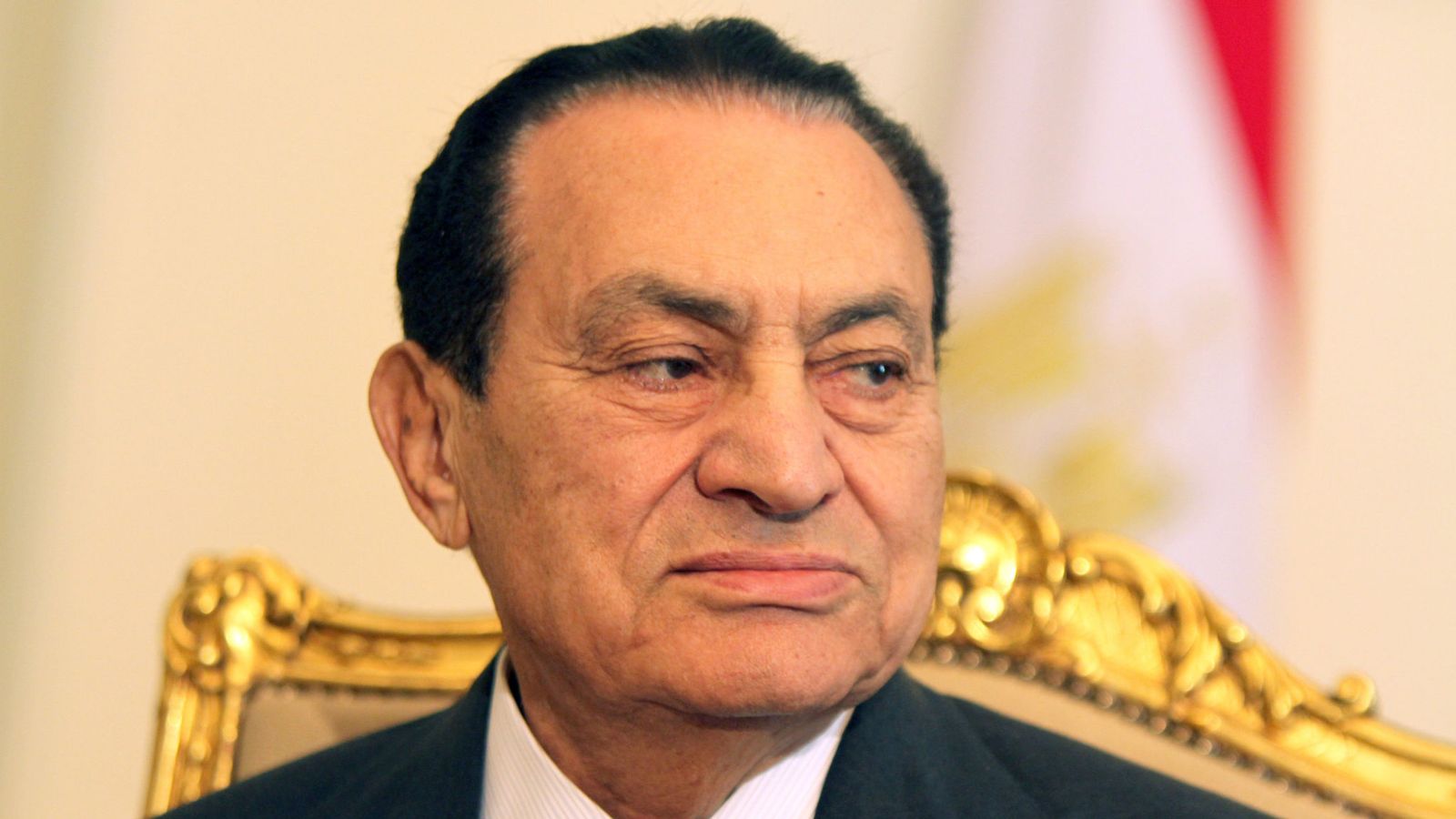
Hosni Mubarak, Egypt's autocrat ousted by protests, dies at 91
Hosni Mubarak, the Egyptian leader who was the autocratic face of stability in the Middle East for nearly 30 years before being forced from power in an Arab Spring uprising, died on Tuesday. He was 91.

Hosni Mubarak, the Egyptian leader who was the autocratic face of stability in the Middle East for nearly 30 years before being forced from power in an Arab Spring uprising, died on Tuesday (February 25), state-run TV announced. He was 91.
Mubarak was a stalwart US ally, a bulwark against Islamic militancy and guardian of Egypt’s peace with Israel. But to the hundreds of thousands of young Egyptians who rallied for 18 days of unprecedented street protests in Cairo’s Tahrir Square and elsewhere in 2011, Mubarak was a latter-day pharaoh and a symbol of autocratic misrule.
His overthrow, however, plunged the country into years of chaos and uncertainty, and set up a power struggle between the military and the Muslim Brotherhood group that he had long outlawed. Some two and a half years after his ouster, Abdel Fattah el-Sissi led the military overthrow of Egypt’s first freely elected president and rolled back freedoms gained in the 2011 uprising.
State TV said Mubarak died at a Cairo hospital where he had undergone an unspecified surgery. The report said he had health complications but offered no other details. One of his sons, Alaa, announced over the weekend that the former president was in an intensive care after undergoing surgery.
El-Sissi offered condolences and praised Mubarak’s service during the 1973 war with Israel, when he commanded the air force, but made no mention of Mubarak’s almost three-decade rule as president of the most populous Arab state. He announced three days of national mourning beginning on Wednesday.
The Presidency mourns with great sorrow the former President of the Republic, Mr. Mohammed Hosni Mubarak,” he said in a statement. It referred to Mubarak as “one of the leaders and heroes of the glorious October war, as he assumed command of the Air Force during the war that restored dignity and pride to the Arab nation. Israeli Prime Minister Benjamin Netanyahu expressed deep sorrow over Mubarak’s death. President Mubarak, a personal friend of mine, was a leader who guided his people to peace and security, to peace with Israel, Netanyahu said.
Palestinian President Mahmoud Abbas said Mubarak spent his life serving his homeland and the issues of righteousness and justice in the world, with the issue of our Palestinian people at the top of them. Born in May 1928, Mubarak was vice president on Oct. 14, 1981, when his mentor, President Anwar Sadat, was assassinated by Islamic extremists while reviewing a military parade.
Seated next to Sadat, Mubarak escaped with a minor hand injury as gunmen sprayed the reviewing stand with bullets. Eight days later, the brawny former air force commander was sworn in as president, promising continuity and order.
Over the next three decades, as the region was convulsed by one crisis after another, Mubarak was seen as a steady hand and a reliable U.S. partner against Islamic extremism. He sent troops as part of the U.S.-led coalition in the 1990-1991 Gulf war and contributed to efforts to resolve the Israeli-Palestinian conflict.
Within Egypt, he presided over slow but steady economic growth and largely kept the country out of armed conflicts after decades of war with Israel. Unlike his predecessors, both Sadat and Egypts towering nationalist leader Gamal Abdel Nasser, Mubarak pursued no grand ideology beyond stability and economic development.
Over the years, Mubarak tinkered with reform but shunned major change, presenting himself as Egypt’s sole protection against Islamic militancy and sectarian division. The US, particularly under President George W Bush, pressed for democratic reforms but was wary of alienating a key ally.
The failure to fulfill repeated promises of change steadily deepened public despair. Those seeking a democratic future were dismayed to see Mubarak making apparent moves to groom his businessman son, Gamal Mubarak, for a dynastic succession.
“At multiple points during Mubarak’s reign, he had the opportunity to reform the Egyptian state,” HA Hellyer, a scholar at the Carnegie Endowment for International Peace, tweeted.
At multiple points during Mubarak's reign, he had the opportunity to reform the Egyptian state, so that it might be able to become more responsive to the growing demographic shifts in the country, and provide for the fundamental freedoms and rights of its citizens. He didn't.
— ᴅʀ ʜ.ᴀ. ʜᴇʟʟʏᴇʀ (@hahellyer) February 25, 2020
“He didn’t. The Jan. 25 uprising didn’t come out of nowhere it was the result of many years of pent-up anger at how the state was failing the citizenry, save a tiny slice at the top,” he added.
#Jan25 didn't come out of nowhere – it was the result of many years of pent-up anger at how the state was failing the citizenry, save a tiny slice at the top. The easiest time to reform – not even revolutionise, just reform – the structure of the Egyptian state was under Mubarak.
— ᴅʀ ʜ.ᴀ. ʜᴇʟʟʏᴇʀ (@hahellyer) February 25, 2020
Inspired by the first Arab Spring revolt in Tunisia, protesters took to the streets in January 2011. They harnessed the power of social media to muster tumultuous throngs, unleashing popular anger over the graft and brutality that shadowed Mubarak’s rule.
In the end, with millions massed in Tahrir Square and other city centers, and even marching to the doorstep of Mubarak’s palace, his resignation was announced on Feb. 11, 2011. The generals took power, hoping to preserve what they could of the system he had led.
Though Tunisia’s president fell before him, the ouster of Mubarak was a watershed moment in the history of the region and gave impetus to uprisings in Libya, Syria, Yemen, and Bahrain.


